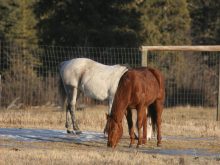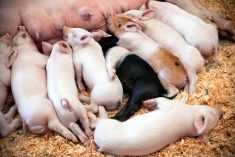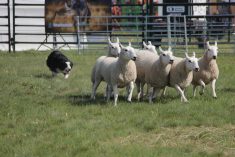An agreement with Cuba to buy several hundred dairy heifers from Canada has moved no further since the contract was signed last March.
For cattle buyer and feedlot owner Tony Saretsky, the export politics are not surprising. He has sold cattle all over the world for more than 30 years and recognizes the stop and go process of international trade.
He travelled to Cuba last March on a government trade mission as a representative of the Canadian Cattlemen’s Association.
They met with Cuban president Fidel Castro and other officials, who wanted to buy swine breeding stock and live dairy heifers.
Read Also

Why selenium is still an important factor in horse health
Selenium is an essential equine trace mineral that supports antioxidant defense, muscle integrity, immune function, metabolism and thyroid activity.
Cuba announced the resumption of full trade with Canada at that time but no animals have moved.
“They initially wanted 200 to 300 and it was assumed they would follow that up with multiple purchases but they haven’t got the first purchase off the ground,” Saretsky said.
He blamed the delay on red tape and the reluctance of the United States to allow Canadian livestock to land on its soil en route to a third country.
“Cuba historically has been a reasonably large customer for Canadian dairy breeding stock to the point that there are actual monuments erected of Canadian dairy cattle because of the amount of improved milk production these particular cows gave,” he said.
“At the end of the day the sale of dairy cattle is relatively small in the big picture but it is very important politically,” he said.
Canada secured an order for 125 tonnes of beef liver and other products. In 2002, Canada sold Cuba 1,522 tonnes of beef of which 998 tonnes were livers.
The problem today is Canadian suppliers find it difficult to compete against low cost suppliers from Latin American countries such as Uruguay.
Regaining markets around the world has been a meticulous process of negotiation. Many countries banned cattle from Canada after a native case of BSE was discovered in Alberta in 2003.
“Every market that opens is symbolic and gives us a wider range of options,” said Canada Beef Export Federation chair Arno Doerksen. He spoke at the Alberta Beef Producers annual meeting Dec. 5-8.
In 2002 Canada exported 126,000 tonnes of beef and beef products worth $470 million to Asia and Mexico.
After BSE was discovered, exports fell to 50,000 tonnes for the year.
Recovery started in 2004 and exports reached 450,000 tonnes worth $1.9 billion, but most went to the U.S.
Up to the end of September this year, 70 countries bought 365,000 tonnes of beef worth $1.5 billion















